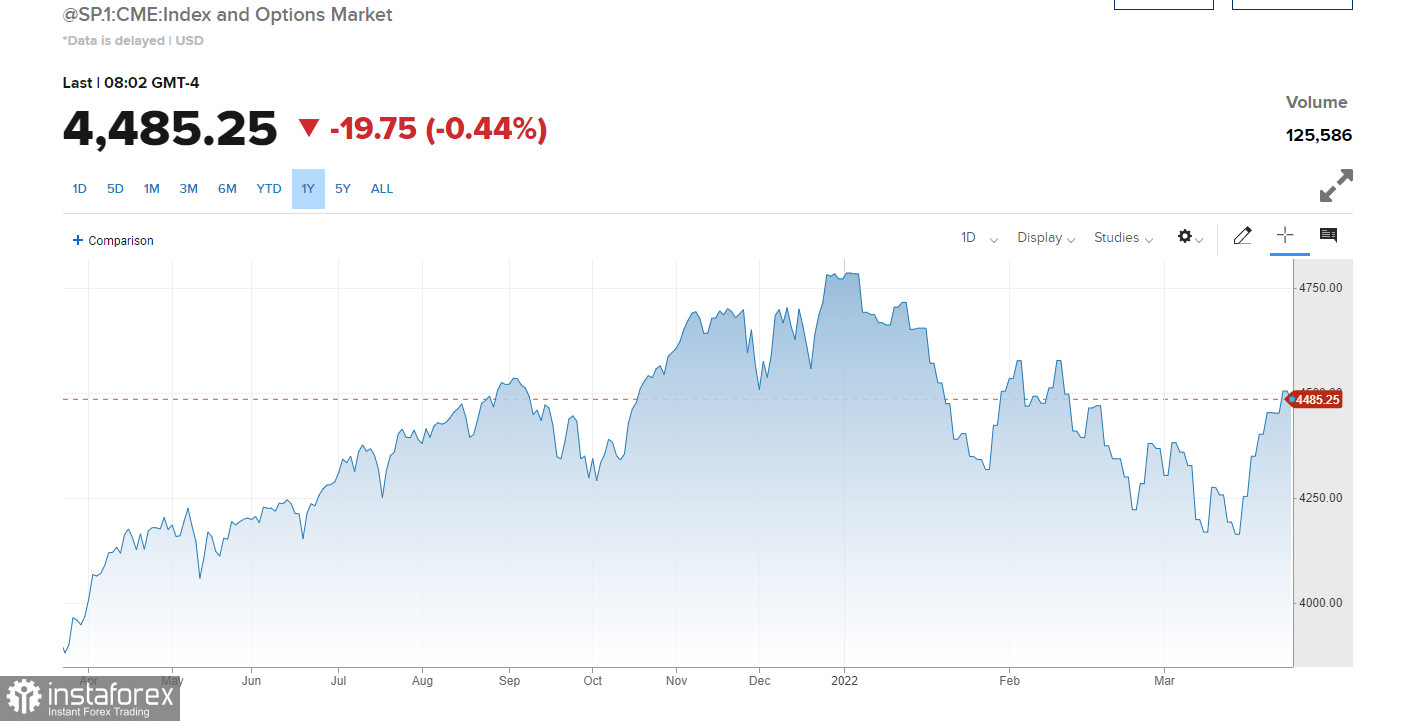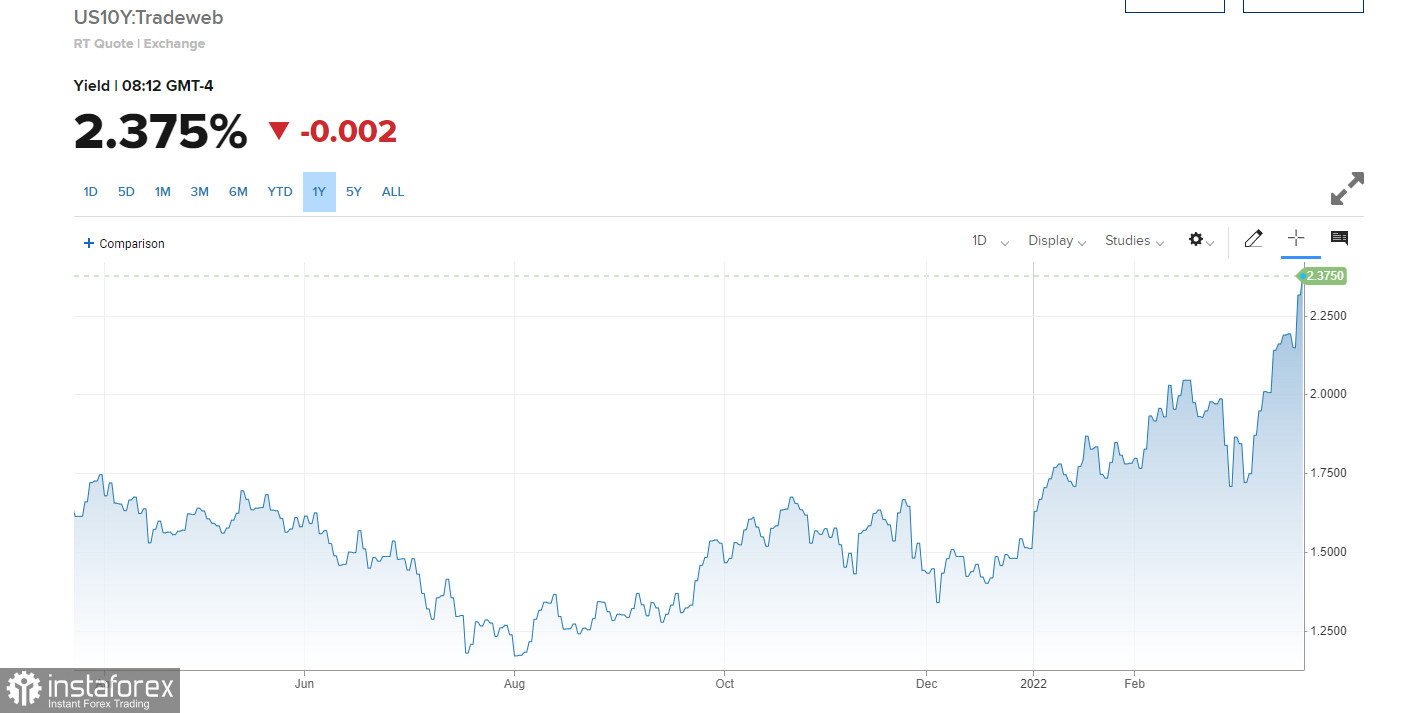US stock index futures started trading lower on Wednesday as oil prices rose and bond yields reached a new multi-year high. Dow Jones Industrial Average futures are down about 140 points, or 0.4%. S&P 500 futures were down 0.5% and Nasdaq 100 futures were down 0.7%.

One of the reasons for the pressure on the stock market was not only the recent statements by the chairman of the Federal Reserve System and his representatives about a likely more active increase in interest rates but also oil prices, which rose, rebounding quickly enough from the level of $ 110 per barrel for the WTI brand. Brent crude, the international benchmark, rose 2.8% to $117.81. The growth in the yield of 10-year US Treasury bonds exceeded 2.41% - the peak value of Wednesday at the time of preparation of the material. This is the highest level since May 2019. Also, the bullish rally on the US stock market may stall due to the 6-day growth that has been observed in our country since March 15 this year.
As for bonds, it is worth noting that their profitability will continue to grow, as more and more investors and large funds are reconsidering their positions, choosing far from safe-haven assets that are not in high demand right now. Even though the brutal sell-off seen earlier this week has eased slightly, rising inflationary pressures around the world are heightening concerns about the global economy's ability to withstand a prolonged period of higher costs. For investors, this means that the attractiveness of owning debt obligations - even safe government bonds - is decreasing, given how sensitive their valuations are to interest rates.

The geopolitical conflict is nothing new there: Ukrainian President Vladimir Zelensky is again slowing down negotiations, constantly reviewing Russia's proposals, as well as calling for increased pressure on Russia from other countries. According to several experts, the conflict has reached an impasse and it is not necessary to count on its resolution in the near future.
As for yesterday, following the results of the regular session, the Dow jumped by more than 250 points, and the S&P 500 rose by 1.1%. These gains came after investors ignored recent comments by Fed Chairman Jerome Powell.
As for the technical picture of the S&P 500
Yesterday's rise above $ 4,488 indicates a continuation of the bullish rally, which is no longer to be expected today. Statements by representatives of the Federal Reserve System, which are hawkish, do not benefit the market. For example, yesterday, the president of the Federal Reserve Bank of St. Louis, James Bullard, said that the tightening of US monetary policy should take place at a faster pace since it will not be possible to stop the upward pressure on inflation in other ways. "The Fed needs to act aggressively to bring inflation back under control," Bullard said in an interview with Bloomberg Television. "We need to reach a neutral level very quickly. This is necessary to exclude further upward pressure in the future. Already, in the US, inflation is much higher than what we are used to seeing." Bulls, of course, will certainly try to continue the upward trend, which will be valid until the moment when trading is conducted above $ 4,488. In this case, we can expect a second breakthrough to $ 4,539. Going beyond this level will open a direct path for the trading instrument to the highs: $ 4,588 and $ 4,665. In case of a return of pressure on the index and a breakdown of the first support level of $ 4,488, it is better not to rush into purchases. A breakdown of this range can quickly bring the trading instrument to the lows: $ 4,433 and $ 4,382, after which the bulls will have to start all over again.
 English
English 
 Русский
Русский Bahasa Indonesia
Bahasa Indonesia Bahasa Malay
Bahasa Malay ไทย
ไทย Español
Español Deutsch
Deutsch Български
Български Français
Français Tiếng Việt
Tiếng Việt 中文
中文 বাংলা
বাংলা हिन्दी
हिन्दी Čeština
Čeština Українська
Українська Română
Română

